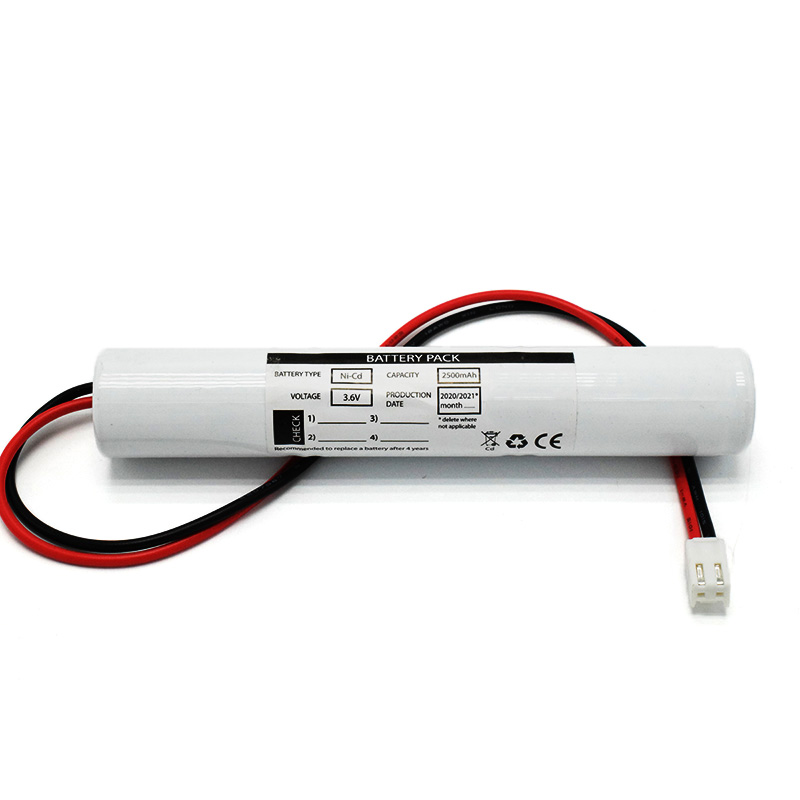An Emergency Light Power Pack is a critical safety device designed to provide backup power to emergency lights, ensuring that they continue to function during a power outage. This feature is crucial for helping people navigate safely through buildings, especially during an evacuation. These power packs are engineered to keep emergency lights illuminated for a set period, usually at least 90 minutes, providing enough time for occupants to exit the premises. To ensure that emergency lights perform effectively when needed, proper maintenance, understanding battery life, and regular testing are essential.
The lifespan of an emergency light battery is a key consideration when choosing and maintaining these units. Typically, emergency lights are designed to operate for a minimum of 90 minutes on battery power. This is the standard requirement in many building codes and fire safety regulations, which aim to ensure enough time for people to safely evacuate a building in the event of an electrical failure. However, the exact duration can vary depending on factors like the battery type and the power consumption of the light. For example, lights that use higher-efficiency LEDs may consume less power, extending the operational time of the battery.
Regular testing of emergency lights is crucial to ensure their reliability. It is recommended that you test your emergency light at least once a month. This can be done easily by pressing the “test” button on the unit. This test simulates a power outage, allowing the battery and light to function independently for the specified period, typically 90 minutes or more. Regular testing helps you ensure that both the light is functioning properly and the battery is fully charged. It also provides an opportunity to identify any potential issues, such as a faulty bulb or a battery that may need replacing.
Emergency lights typically use one of three common battery types: Nickel-Cadmium (NiCd), Nickel-Metal Hydride (NiMH), or Lithium Iron Phosphate (LiFePO4). Each of these battery types has distinct advantages:
- NiCd batteries are a traditional choice, offering reasonable performance at a lower cost, though they have a shorter lifespan and are more prone to memory effects.
- NiMH batteries are more environmentally friendly than NiCd, offering better capacity and performance. They also have a longer lifespan, but they can be more expensive.
- LiFePO4 batteries are the latest technology and offer the longest lifespan and highest efficiency. These batteries are more expensive but provide superior performance and require fewer replacements over time.
Choosing the right type of battery depends on the specific needs of your emergency lighting system, including how often the lights are used and how long the backup power is required.
Determining when to replace the battery in your emergency light is critical to ensuring it will function during an emergency. If the light does not illuminate during a test or the light significantly dims during the test period, it’s a clear indicator that the battery is no longer functioning properly and needs replacement. Additionally, most emergency light systems will have a battery replacement indicator, which will provide an alert when the battery has degraded and needs replacing.
While it's possible to replace the bulb in an emergency light, it's important to recognize that if the light isn't functioning properly during the test, the issue may not be with the bulb but with the battery pack. In such cases, replacing just the bulb might not resolve the issue, and you may need to replace the entire power pack to restore full functionality.
Emergency lights come in several operation modes, each suited for different needs:
- Maintained Mode: The light is always on and powered by the mains electricity, with the battery constantly charging in the background.
- Non-Maintained Mode: The light is off under normal conditions and only illuminates when a power failure occurs, relying entirely on battery power.
- Semi-Maintained Mode: The light is powered by mains electricity under normal conditions but switches to battery power automatically during a power failure.
Each of these modes offers distinct benefits depending on the specific requirements of the building or area being illuminated.
To ensure the safety and functionality of emergency lights, proper installation and regular testing are paramount. Common safety concerns include:
- Improper installation: If not installed correctly, emergency lights may not operate as intended during a power failure.
- Neglecting regular testing: Skipping monthly tests can result in undetected issues with the lights or battery.
- Using damaged or old batteries: Batteries degrade over time, and using outdated or damaged batteries can render emergency lights ineffective when needed most.
- Failure to follow manufacturer instructions: Always follow the guidelines provided by the manufacturer for maintenance and testing to ensure optimal performance.
Emergency light power packs are vital safety components in buildings, providing essential backup lighting during power failures. Understanding how long the battery lasts, how to test the system, the type of battery used, and when to replace the battery are all crucial factors in ensuring the reliability of emergency lighting systems. Regular testing and maintenance are key to ensuring that these life-saving devices function properly in an emergency. By adhering to best practices and using high-quality, sustainable battery technology, you can ensure the effectiveness of your emergency lights when they are needed most.

 Ni-MH Battery C4700mAh 3.6V
Ni-MH Battery C4700mAh 3.6V Nickel Cadmium Nicd Battery Pack SC1800mAh 3.6V
Nickel Cadmium Nicd Battery Pack SC1800mAh 3.6V Ni-Cd Battery Pack D4000mAh 3.6V
Ni-Cd Battery Pack D4000mAh 3.6V Ni-Cd Battery Pack C2500mAh 3.6V
Ni-Cd Battery Pack C2500mAh 3.6V NICAD Battery Pack AA900mAh 3.6V
NICAD Battery Pack AA900mAh 3.6V LiFePO4 IFR18650 1600mAh 3.2V
LiFePO4 IFR18650 1600mAh 3.2V LiFePO4 IFR18650 1600mAh 6.4V
LiFePO4 IFR18650 1600mAh 6.4V Ni-MH Battery C4000mAh 3.6V
Ni-MH Battery C4000mAh 3.6V E-bike Battery 48V 10Ah JL-1
E-bike Battery 48V 10Ah JL-1 E-bike battery 48V 10Ah Qing Tian
E-bike battery 48V 10Ah Qing Tian